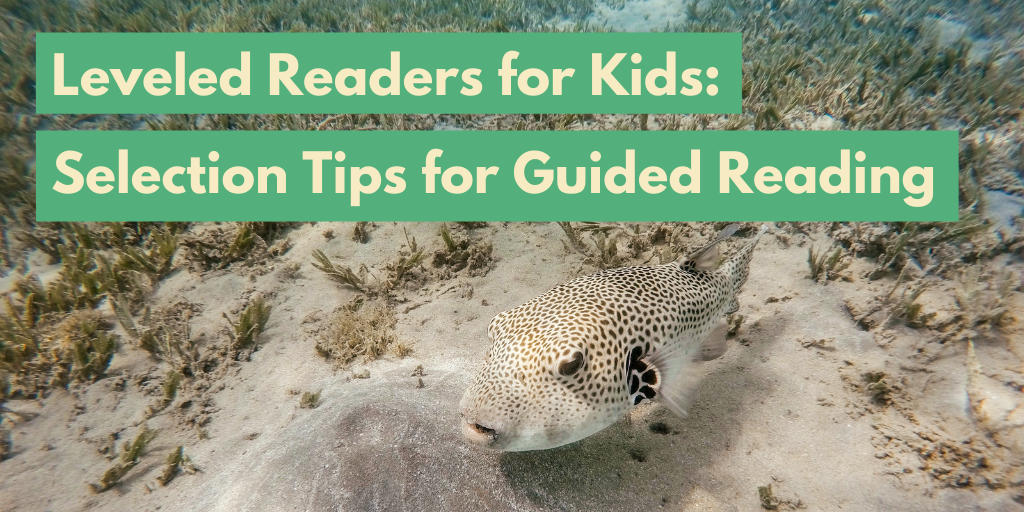Editor's Note: This blog was previously published, we're re-sharing it today during the Holiday season.
By Lyssa Sahadevan, First Grade Teacher, Guest Blogger
Leveled reader sets are a “just right” way to help students gain important comprehension skills that include increasing vocabulary, developing fluency, determining importance, making real world connections, and retelling. Choosing leveled readers that support content area reading provides a synergistic effect. Students both gain knowledge to support the Common Core reading standards and practice reading comprehension strategies by reading texts that are on or slightly above their level. Continue reading for help with finding great leveled readers that are ideal for your next science and social studies guided reading lesson.

When organizing a guided reading lesson plan, consider previously taught content, upcoming content, and student interests. Selecting leveled guided reading books about previously taught content could serve two purposes: a review of material, and an extension of material. For example, in first grade, we cover continents and oceans early in the school year, so I choose books about this topic for later in the year to maintain the knowledge.
Using guided reading time as a preview for upcoming content empowers readers at all levels. In the past, I planned this primarily for my struggling readers. I learned that previewing content benefits all readers. If higher-level readers understand the content early on, they are able to move on and extend their learning when we are ready for the direct instruction.
Of course, students' interest should play a role in guided reading groups, too. Student-interest surveys are an excellent way to discover what your readers are into. I do this orally during conferences at the beginning of the year and on sticky notes for the rest of the year. I update interests at least every six weeks. With older readers, their interests may not change as often.

Guided reading is a special time. It is like a team huddle, and that huddle time is precious! By planning instruction around quality science and social studies nonfiction books, you are able make the most of your students’ time. They are able to practice content-area literacy skills and learn important content. By planning in this way, teachers are able to introduce new genres, cultures, topics, feelings, and ideas. This could guide readers into broadening their personal interests and self-selecting new books.
After reading about reptiles in Horned Lizard from Hameray's Zoozoo Animal World , one of my guided reading groups decided to learn about other animal groups. This same group created their own chart of animal groups and added to it with information from their independent reading of animal books. This lesson started with leveled books and became much more! The whole class ended up joining in on the fun. When it came time for us to officially study animals and their habitats, we were ready!

One of our most powerful guided reading lessons has focused on asking and answering questions. The book I chose to anchor the lesson is Are You a Bully? from Hameray's Kaleidoscope Collection . The discussion from this book is profound. This topic is personal to every student. We read, we review, we talk. The reading lesson may end, but the real lesson continues long after. The students often decide to read the book to other students in the class, and this can result in a carry-over conversation during morning meetings. Our twenty-minute guided reading lesson helps strengthen our social/emotional skills while practicing asking and answering questions. What more could a teacher ask for?
Reading expert Gay Su Pinnell says, “By using leveled reading instruction, you can help students become good readers who not only can read, but do read.” Leveled book sets provide this opportunity. They are a must-have resource for both guided reading and independent reading time. The levels are a guide for teachers and help when planning instruction. Adding informational books to your collection is a great way to integrate content throughout the day and introduce your readers to new topics.
Speaking of new topics, be sure to keep visiting this blog for more ideas and teaching tips!
~~~
 Lyssa is a first-grade teacher in Georgia and mother of two fun little boys. She loves reader's and writer's workshop, is a former Teacher of the Year, and shares ideas at
My Mommy Reads
. If you like what you read here, you can enjoy
more from Lyssa on our blog
.
Lyssa is a first-grade teacher in Georgia and mother of two fun little boys. She loves reader's and writer's workshop, is a former Teacher of the Year, and shares ideas at
My Mommy Reads
. If you like what you read here, you can enjoy
more from Lyssa on our blog
.
~~~













































![6 Fun and Easy Activities to Practice Sequencing [Grades K-1]](http://www.hameraypublishing.com/cdn/shop/articles/Red_Typographic_Announcement_Twitter_Post-5_bf1ae163-a998-4503-aa03-555b038d1b76_600x.png?v=1689961568)
![Leveraging Prior Knowledge Before Writing and Reading Practice [Grades 1–2]](http://www.hameraypublishing.com/cdn/shop/articles/Red_Typographic_Announcement_Twitter_Post-4_600x.png?v=1689961965)



